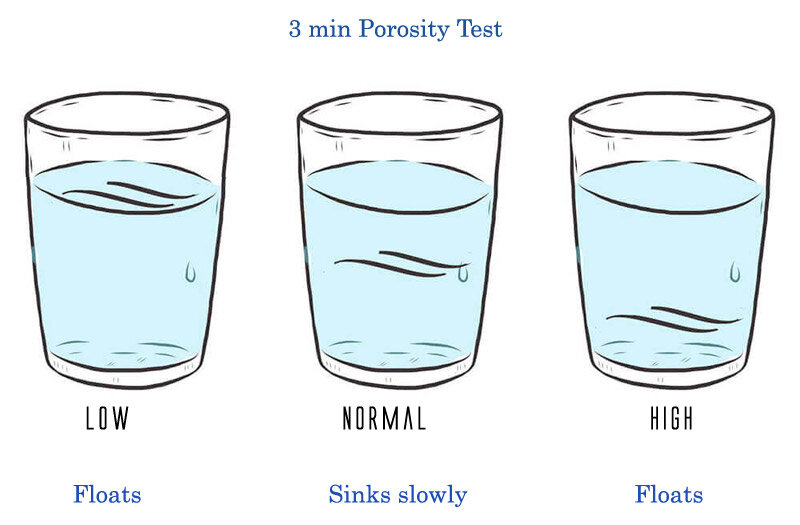Porosity and hair care
You may have heard the term ‘porosity’ when it comes to hair, but unless you were formally trained, you might not be familiar with what it really means. Understanding what porosity means and how you can apply it to the care of your hair can be very handy. First, what is Porosity?
Porosity refers to hair’s ability to absorb moisture. How absorbent depends on your natural texture, color history, styling, and degree of environmental exposure. The usual suspects that damage hair–bleach, excessive heat, sun and salt water–not only leave hair weakened, they also increase hair’s porosity. In healthy hair, the cuticle is closed, protecting the hair shaft.How do I know if I have porous hair?There are two methods you can use to find out how porous your hair is.The Float Test: Take a couple of strands of hair from your comb or brush and drop them into a bowl of water. Let them sit for 2-4 minutes. If your hair floats, you have low porosity. If it sinks, you have high porosity.The Slip'n'Slide Test: Take a strand of hair and slide your fingers up the shaft (toward the scalp). If you feel little bumps along the way, this means that your cuticle is lifted and that you have high porosity. If your fingers slip smoothly, then you have low porosity hair.
Still not sure? Here are characteristics of low, normal, and high porosity when it comes to hair:Low porosity characteristics:Products sit on your hairWashing and drying takes longerProduct buildup is more common
Normal porosity characteristics:Hair has high elasticityVery little maintenance is required for your hairHair easily accepts and retains moistureHair can be colored with good results
High porosity characteristics:Hair easily absorbs water and productsHair often looks and feels dryHair can be frizzyHair dries quickly
You might be wondering what this all means when it comes to coloring your hair...When the cuticle of the hair is frayed and lifted, as in the case of highly porous hair, color penetrates very easily and hair color formula can further weaken strands. On the other side of the spectrum, hair that’s low in porosity, while slick and smooth, repels color and often requires longer processing times. For those with high porosity, your time for color may be shorter as we want to mitigate more damage to your hair. For those with low porosity, your hair may take longer to process. Tips on managing your hair type:Low porosity hair care:Apply products to damp hair to allow them to sink in vs. on drenched hair.Use some heat conservatively to open the cuticle and allow for treatments to soak in.Try using an Apple Cider Vinegar wash to eliminate product build-up. We love Acid Wash from r+co.
Normal porosity hair care:Use a deep conditioner or mask to maintain the health of your hair. We love r+co’s Television Mask.
High porosity hair care:Allow your hair to air dry as heat can further damage your hair.Incorporate a treatment or deep conditioner into your haircare routine. We loveRinse your hair with cold water to seal your cuticle.Detangle your hair with a detangler and a Wet Brush to minimize further damage.
We hope that this blog post provided a better understanding of your hair type to better care for your strands!
